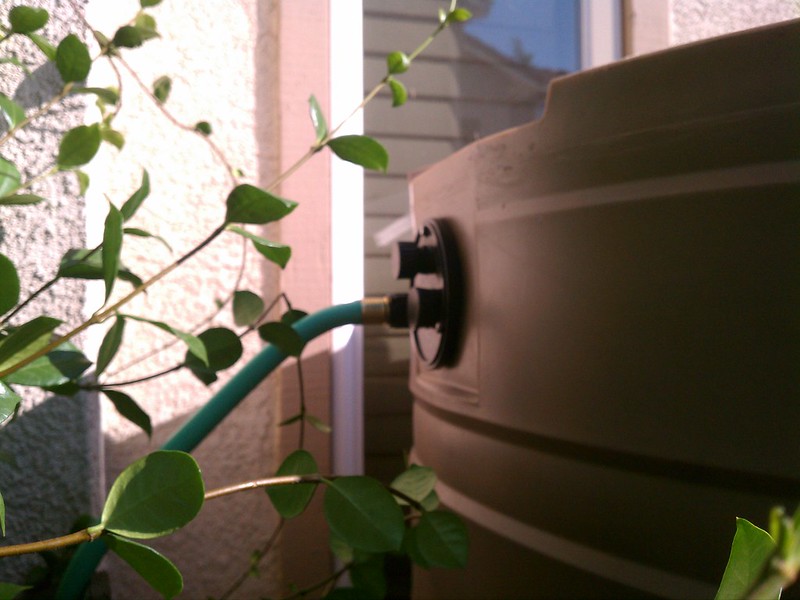Harvesting rainwater is an age-old practice that has seen a resurgence in popularity in recent years. Not only does it provide a sustainable source of water, but it can also save you money and reduce your environmental impact simultaneously. This article will explore how rainwater harvesting tanks work and their benefits and share some tips on installation and maintenance to help you start harvesting rainwater.
- What Is a Rainwater Collection Tank?
- How Does Rainwater Harvesting Work?
- Benefits of Rainwater Harvesting
- What to Consider Before Installing a Rainwater Harvesting System
- Guide To Harvesting Rainwater with a Harvesting Tank
- What Is the Capacity of Tanks to Store Rainwater?
- Are Rainwater Harvesting Tanks Safe to Use?
- Is Rainwater Collection Legal?
- How Much Does Rainwater Harvesting Cost?
- When Should I Install a Rainwater Harvesting System?
What Is a Rainwater Collection Tank?
A rainwater harvesting tank is an underground or aboveground vessel designed to collect, store, and channel rainwater from roofs and other surface areas. The collected water is usually used for irrigation, landscaping, or other non-potable uses. Many rainwater harvesting tanks are equipped with a sump pump, filtration system, or water treatment system to ensure the collected water is safe for use.
How Does Rainwater Harvesting Work?
Rainwater harvesting systems typically comprise a roof catchment area (usually rooftops and other surfaces), conveyance outlets (such as gutters and downspouts), storage tanks, and delivery systems. When it rains, the roof catchment area catches the water, which is then routed through the conveyance outlets to a storage tank. The stored rainwater can then be pumped out of the storage tank and delivered to its destination.
Benefits of Rainwater Harvesting
Rainwater harvesting has several essential benefits. As more people seek to become self-sufficient and reduce their environmental impact, rainwater harvesting is becoming an attractive option. Here are some of the main advantages of collecting rainwater:
1. Saves money on water bills
By harvesting rainwater using rain barrels, you can significantly reduce your water bill as the collected water is free and can be used for non-potable applications. You can save even more money when combined with other water-saving measures, such as fixing leaks and using low-flow fixtures.
2. Reduces runoff and flooding
You can reduce your property’s stormwater runoff when rainwater is collected and stored. This can help reduce flooding in surrounding areas, improve water quality, and reduce the need for costly storm drainage systems. Some communities even offer incentives for installing rainwater harvesting systems to reduce local runoff.
3. Promotes sustainable water use
Rainwater storage tanks provide a sustainable source of water that you can use for irrigation, landscaping, and other non-potable applications. Even if you don’t use the water, it can be recharged back into local watersheds, helping to maintain a healthy environment. Although drinking rainwater is not recommended without proper filtration and treatment, you can use it for other purposes.
4. Reduces the demand on municipal water systems
By using harvested rainwater, you can reduce your dependence on municipal water supplies and help alleviate pressure on public water systems. This can help conserve valuable resources, save energy, and even reduce the cost of water for other users in the area.
5. Enhances landscape aesthetics
Rainwater harvesting systems can be designed to blend into a landscaping setting. A rainwater harvesting system can add to the aesthetic of a landscape while helping to create a more sustainable environment.
6. Protects from water contamination
Rainwater can become contaminated by atmospheric pollutants, such as heavy metals and chemicals. Harvesting rainwater helps to protect the water supply from these contaminants. If the water is collected and stored correctly, it can also be filtered before use.
What to Consider Before Installing a Rainwater Harvesting System
Harvesting rainwater can effectively reduce your water bill, conserve resources, and reduce runoff. However, before investing in a harvesting tank, there are several things to consider:
1. Cost
Rainwater harvesting tanks can range from a few hundred dollars to several thousand, depending on the size and type of tank. You may also need to factor in additional installation, maintenance, filters, and other equipment costs.
2. Regulations
Before installing a harvesting system, check with local authorities to ensure you follow all applicable regulations and restrictions. In some states, collecting rainwater is illegal without a permit or license.
3. Maintenance
When you collect rainwater, it needs to be appropriately maintained to ensure it is safe for use. This includes cleaning the tank regularly and replacing filters and other components when necessary. Some tanks may also require regular inspections.
4. Location
Rainwater collection tanks should be located in areas with plenty of rainfall and an extensive collection surface area. This could include rooftops, driveways, or other surfaces.
5. Capacity
Rainwater harvesting tanks come in a variety of sizes and capacities. Consider your water usage requirements when selecting a tank to ensure it can meet your needs. You may also want to consider a larger tank if you use the water for multiple purposes.
Guide To Harvesting Rainwater with a Harvesting Tank
1. Identify the best locations for collecting rainwater and installing a tank
The ideal location for harvesting rainwater is an area with plenty of rainfall and a large collection surface area. This could be a rooftop, pavement, or other surfaces like driveways or patios. Ensure the collection surface is large enough to accommodate a tank, and check for any local regulations on rainwater harvesting. You can effectively make use of the rain gutter systems to direct the flow of rainwater into the harvesting tank.
2. Calculate the volume of water you need to collect
Once you know the size of the collection surface, you can determine the amount of rainwater you can harvest. This will help you decide the rain barrel or tank size needed to collect and store rainwater. You may also consider installing multiple smaller tanks or barrels instead of one large tank to reduce installation and maintenance costs.
3. Install the storage tanks
Install the tanks in the designated area and ensure they are correctly connected to the gutters and other collection outlets. A rainwater diverter system may also be required to direct the water into the tank. You can do this with a simple valve or by connecting the system to an external pump.
4. Add a filtration system or other treatment system
Suppose you plan on using the harvested water for drinking or other potable applications. In that case, it is important to install a filtration system or other treatment to ensure that the water is safe to use. You can do this with a simple filter or by connecting the system to an external water treatment plant, which may require additional costs that you must factor in.
5. Schedule maintenance for the tanks
Periodic maintenance is necessary to keep the harvesting system operating efficiently. This includes cleaning the barrel, replacing filters, checking for leaks, and inspecting pipes and pumps. Some states may also require regular inspections of the tanks.
What Is the Capacity of Tanks to Store Rainwater?
The capacity of rain harvesting tanks can vary greatly depending on the type and size of the tank. Generally, larger tanks have a higher capacity and can store more water. Aboveground tanks are typically limited to around 6,000 gallons, while underground tanks can hold up to 40,000 gallons.
It’s important to note that climate and precipitation can also affect the capacity of rainwater harvesting tanks. A larger tank may be required to collect and store the water in areas with higher rainfall. In drier climates, a smaller tank or multiple tanks may be necessary.
Are Rainwater Harvesting Tanks Safe to Use?
When properly installed and maintained, rainwater harvesting tanks are safe to use. The collected water should be filtered or treated before being used for drinking or other applications. This ensures that the water is safe and free from contaminants. It’s also important to regularly inspect and clean your tank to prevent the growth of algae and other organisms.
Is Rainwater Collection Legal?
The laws and regulations related to rainwater harvesting vary from state to state. In some cases, a permit or license may be required. It’s essential to check with local authorities before collecting rainwater. You can also consult a qualified professional for advice on the legality of harvesting rainwater in your area.
How Much Does Rainwater Harvesting Cost?
Some rainwater harvesting tanks are inexpensive and can be installed for a few hundred dollars. However, the total cost of a system depends on the size and type of tank, the collection surface area, and other components such as filters, pumps, or treatment systems. Generally, larger tanks and more complex designs will cost more.
When Should I Install a Rainwater Harvesting System?
The best time to install a rainwater harvesting system is during the spring or summer when the weather is warmer, and rain is more frequent. This ensures you have plenty of time to set up the system before winter arrives. However, you can also perform maintenance and add additional components to the system throughout the year.
Harvesting rainwater is an effective way to save money and conserve resources. With proper installation and maintenance, a rainwater harvesting tank can provide a reliable water source and help reduce the demand on municipal water supplies. Before investing in a harvesting tank, check with local authorities and consider the cost, size, and other factors to ensure you get the right system for your needs. With the right system in place, you can start collecting and using your own rainwater!






